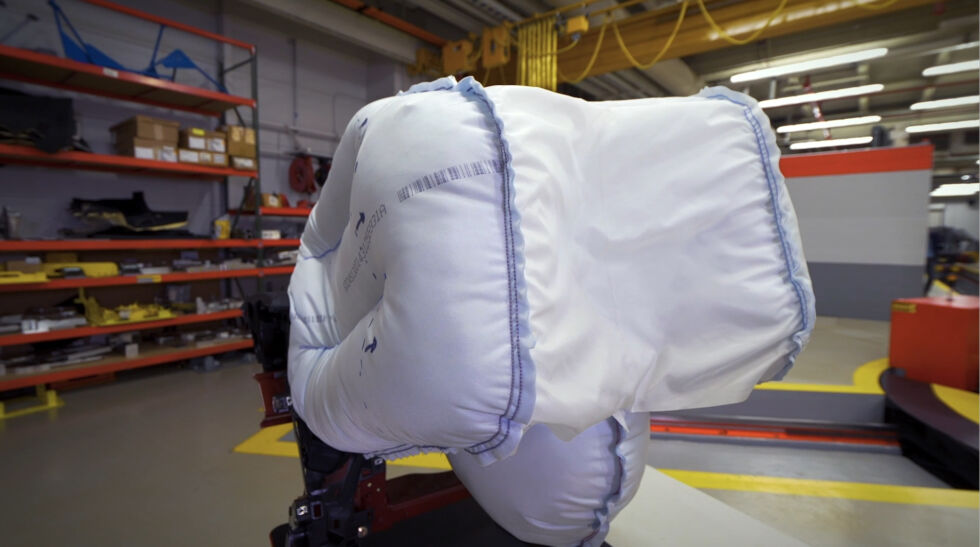Acura has invented an airbag that works like a catcher’s mitt

Hopefully something we never have to see in person-an inflated three-chamber airbag. You can see here how the two outboard chambers are connected by a fabric sail. [credit: Acura ]
Cars, trucks, and SUVs are safer today than they've ever been, but with 22,891 recorded US passenger vehicle fatalities in 2018, it's obvious we still have some way to go. That's where today's invention comes in-it's a new kind of airbag developed by Acura, designed to reduce brain injuries in front seat passengers. Instead of the single-chamber passenger airbag you probably have in the dash of your car, this one uses three individual chambers that work like a baseball catcher's mitt, allowing your head to decelerate more gently and without the kind of rotation that causes diffuse axonal injuries.
The project started off with a new crash test dummy called Thor, which more accurately reproduces the kinds of injuries suffered by humans when they're brought to a sudden stop in a vehicle crash. "Through that additional biofidelity, specifically as we talk about torsions and spinal stiffness, as well as through the head and neck and thorax, we are better able to predict real-world injuries with this new dummy, so it's given us new insight into how we can further improve our restraint system," explained Eric Heitkamp, principal engineer, crashworthiness, at Honda R&D Americas.
As the pictures above show, when the airbag deploys, outboard chambers inflate, linked by a fabric "sail." Behind that sail and in between the two outboard chambers is a third, central chamber-this is the one your face eventually decelerates into, although by the time that happens, it has already been slowed somewhat. The three work together to prevent the passenger's head and neck from twisting, which could otherwise end up moving them toward the centerline or the door of the car.
Read 2 remaining paragraphs | Comments